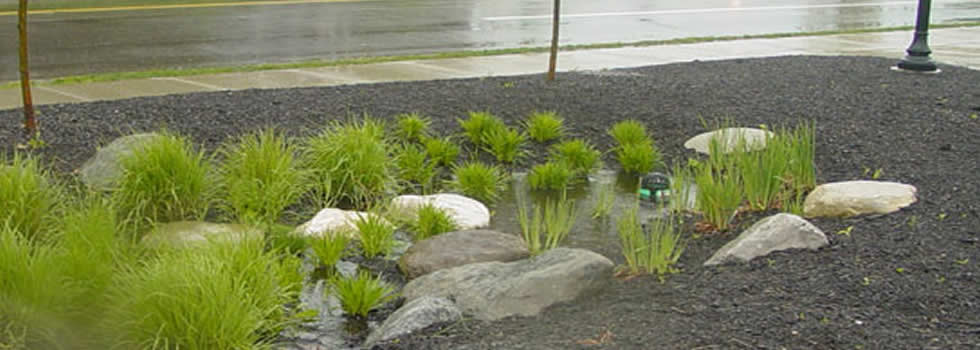If you live in an area that experiences a large quantity of water runoff brought on by storms, then you may be familiar with the need for bio-retention ponds.
Many developed areas feature large spaces that are occupied by structures such as roads and parking lots. When rainwater falls on these areas it collects into streams that then dissipate either into the natural ecosystem or into the water supply. The problem with this is that the rain also brings with it many of the pollutants that we leave behind on our roads and parking lots such as motor oil. A bio retention pond adequately addresses this problem.
A bio retention pond is typically constructed in an area that experiences a large amount of storm water runoff. The pond will collect all of the storm water and retain it for a period of time. During this period of time, many of the pollutants from the storm water runoff will be given the chance to filter down through the soil at the bottom of the bio retention pond. The now purified water is then allowed to filter out of the pond and into the ecosystem without all of the pollutants it collected.

Many areas in the United States experience an extremely high level of storm water runoff annually. Man made features such as parking lots, parking garages, and strip malls can exacerbate the effects of large amounts of rainfall by channeling all of the water into one area. Over time, this effect can have a dramatic negative consequence on property and natural ecology. Storm runoff that first runs through parking lots often carries with it large quantities of pollutants such as motor oil and human garbage. A good solution to this problem is to construct a microbio retention pond.
A good microbio retention pond is usually placed in an area that experiences a large amount of storm water runoff. The purpose of the retention pond is to gather all of the potentially polluted and chemical laden water in one area and allow it to percolate down through the soil and the plants at the base of the pond. This prevents polluted water run off from getting into the water supply or other delicate ecosystems.